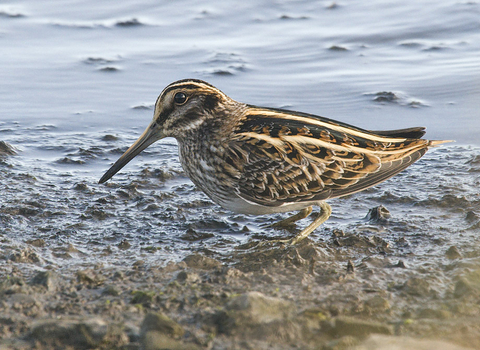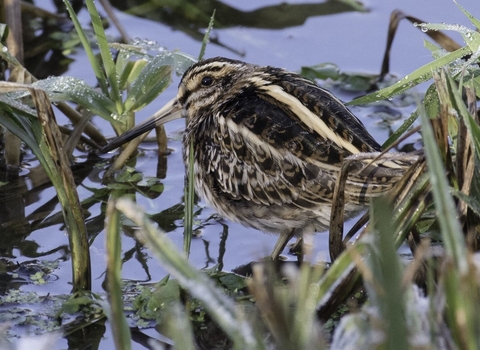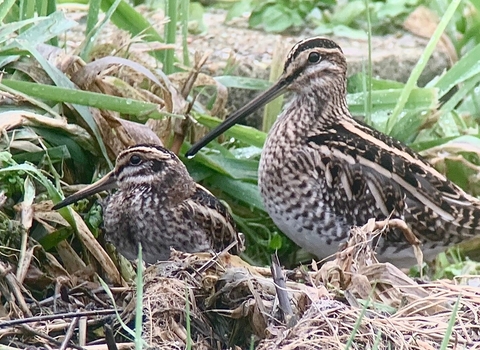
Jack snipe ©John Bridges

Jack snipe © Chris Dover

Jack snipe and common snipe © Barry Trevis
Jack snipe
This well-camouflaged wader is a winter visitor to the UK, where it can be seen feeding on wetlands with a distinctive bobbing motion.
Scientific name
Lymnocryptes minimusWhen to see
September to AprilSpecies information
Category
Statistics
Length: 18cmWingspan: 40cm
Weight: 55g
Classified in the UK as Green under the Birds of Conservation Concern 5: the Red List for Birds (2021).
Habitats
About
The jack snipe is a small wading bird, similar to the more familiar common snipe. Unlike their common cousins, jack snipe are just winter visitors to the UK, spending the summer breeding on waterlogged bogs in northern Europe.Jack snipe are secretive birds, often hidden in thick vegetation on marshes, wet grassland and in reedbeds. They use their long bill to probe the mud for insects, worms and even plant material, moving in a slight crouch and constantly bouncing up and down as if their legs were made of springs.
How to identify
A small wader, about two thirds the size of a common snipe, which it resembles in plumage. The upperparts are brown with golden stripes, the belly is white and the breast is buff with thin dark streaks.Compared to a common snipe, the bill is much shorter with a relatively deeper base, and the top of the head is all dark, lacking the golden crown stripe. Also, the pale band above the eye (the supercilium) is split in two by a thin dark line, which looks a little like an eyebrow. The ‘bouncing’ feeding action is often distinctive, though common snipe will sometimes bob slightly as well.
Jack snipe are reluctant to fly from cover, preferring to hunker down and trust to their impressive camouflage. They will only flush when almost trodden on, usually only flying a short distance before dropping back into cover. Common snipe tend to flush much earlier, calling as they take to the air and then flying high and zigzagging erratically.
Distribution
Jack snipe can be found across the UK in winter, absent only from the uplands. They favour marshes, wet grasslands and the muddy fringes of reedbeds.Did you know?
The jack snipe’s secretive nature is reflected in its scientific name. Lymnocryptes is derived from the Greek words limne, meaning marsh, and krupto, meaning to hide. The species name minimus is Latin for smallest.Watch
Jack Snipe (https://vimeo.com/447449224)
Jack Snipe by Tom Hibbert
